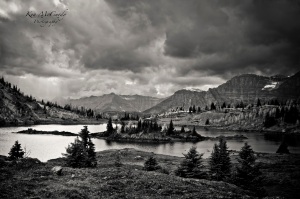Elemental Photography
“It’s elementary, my dear Watson.” Sherlock Holmes couldn’t have been more accurate if he had been a photographer. Elements are the building blocks to a great photograph, but you first must be able to identify them.
Approaching photography with a wide perspective can open your eyes to a new way to visualize a scene. Can’t see the forest for the trees is a good analogy for the tunnel vision a photographer may encounter when they can’t see the scene for the elements. The ability to recognize and utilize all the elements that are present and some that could be modified are key to the ultimate success in capturing an image to its fullest potential. Developing a keen awareness for all the elements gives you the opportunity to incorporate them into your composition or not. Not seeing the elements is vastly different than choosing not to include them, or to what extent they are included in your composition .
What is an ‘element’ ? By definition it is any of the four substances (earth, water, air, and fire) regarded as the fundamental constituents of the world in ancient and medieval philosophy. In photography we can take it a bit farther and include anything that it pertinent to enhancing the mood, composition, flow or visual appeal of a photo. This also is true in excluding elements that will weaken your photographs.
To a photojournalist covering an event featuring a speaker on a podium the elements might include the keynote speaker, the right position for lighting, a specific moment where a gesture or look captures the mood or tone, or maybe a significant sign or poster behind them that could be included. These are all elements that you can either consider or not, but must be aware that they may be there for you to utilize. There may also be elements like microphones or staging equipment, that a photographer may want to exclude from the composition to make the image cleaner or less distracting. The message is that you must be aware of every element so you can formulate your vision properly.
The landscape photographer must also use the elements as an asset when possible to make a strong image. Lighting. time of the year, weather conditions and the elements which help to compose the mood of a photograph and have to be factored in before the photograph is captured. Elements can help the flow of your images through careful composition and an understanding of the way a human eye moves through a photograph to the focal point you have chosen for the viewer. Shapes and textures increase the feel to your photo and lit properly can add another dimension to your work. The time of day is an element that can be modified somewhat for mood and texture. While the weather conditions, like storm clouds, wind or billowing clouds in a blue sky can add drama and a completely different feel to the same scene.
A photographers camera position, both laterally and vertically to his focal point will alter the view and perspective of a scene or subject. I would also suggest that your position is an element that should be recognized as key to the success of your photography. I always find it interesting when a photograph from another photographer, of a place I have also visited, is virtually within one square meter of where I stood for my photo and is composed almost identically with the elements provided. Of course this is only true if neither photographer has seen the others photo.
Only when a photographer is able to become aware of their surroundings and recognize the elements that are available to them, will their choices be informed and decisive regarding every aspect of the image they are about to make. Photography is by definition a visual endeavor and you must open your eyes if your want to see the elements.


